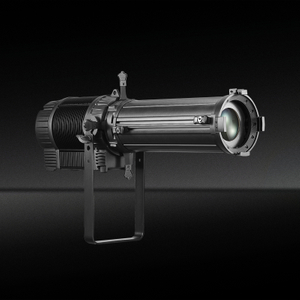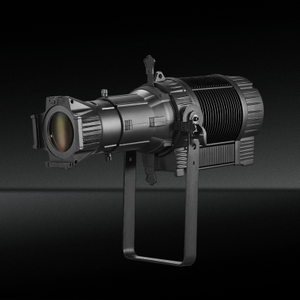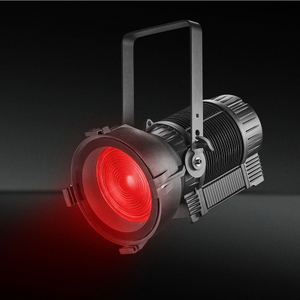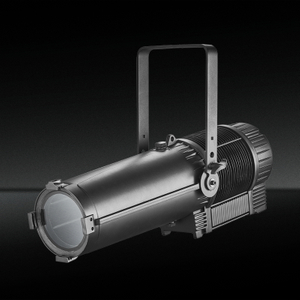Choosing The Right LED Theater Light for Your Next Show
Views: 9 Author: Site Editor Publish Time: 2024-11-28 Origin: Site








When it comes to staging a successful production, the lighting can make all the difference. LED theater lights have become a popular choice among lighting designers and production teams due to their versatility, energy efficiency, and superior performance. However, with so many options available, choosing the right LED theater light for your next show can feel overwhelming. In this article, we'll explore the various factors to consider when selecting LED theater lights and provide you with a comprehensive guide to making an informed decision.
Understanding LED Theater Lights
What Are LED Theater Lights?
LED theater lights are lighting fixtures that use light-emitting diodes (LEDs) as their light source. Unlike traditional incandescent or halogen lights, LED lights are known for their long lifespan, low heat output, and energy efficiency. These lights come in various forms, including spotlights, floodlights, and wash lights, each designed to serve specific purposes in a theatrical setting.
Types of LED Theater Lights
1. LED PAR Lights
LED PAR (Parabolic Aluminized Reflector) lights are versatile fixtures that can be used for both wash and spotlight applications. They are commonly used to create colored washes or to highlight specific areas on stage. Their compact size and ease of use make them a popular choice for theater productions.
2. LED Profile Lights
Profile lights, also known as ellipsoidal lights, are designed for precise lighting control. They allow for sharp focus and can be used to create defined shapes and patterns on stage. These lights are perfect for theatrical productions that require a high degree of control over light placement.
3. LED Strip Lights
LED strip lights are flexible and can be easily mounted in various configurations. They are often used for accent lighting or to highlight set pieces. Their ability to produce a wide range of colors makes them a favorite for dynamic performances.
4. LED Fresnel Lights
Fresnel lights provide a soft wash of light and can be adjusted to create different beam angles. They are commonly used in theater for general illumination and can be focused to highlight specific areas or performers.
5. LED Moving Head Lights
For dynamic performances that require versatility, LED moving head lights are an excellent choice. These fixtures can pan, tilt, and change colors, allowing for creative lighting effects that enhance the overall production.
Factors to Consider When Choosing LED Theater Lights
1. Purpose and Application
Before selecting LED theater lights, it’s crucial to assess the specific requirements of your production. Are you lighting a vast stage for a musical, a smaller venue for a play, or an outdoor event? Each application demands a tailored approach and distinct types of fixtures to achieve the desired effects.
Spotlights: These are essential for directing attention to specific performers or elements on stage. They provide concentrated beams of light that enhance dramatic moments and emphasize key actions.
Wash Lights: Ideal for creating a broad wash of color or providing general illumination across the stage, wash lights help establish the overall mood and environment of a performance. They are particularly useful for filling in shadows and ensuring even lighting.
Floodlights: These fixtures are designed to illuminate large areas, making them perfect for outdoor events or expansive stage settings. Floodlights can also create ambient light, contributing to the overall atmospheric effect.
2. Brightness and Lumen Output
Brightness is a pivotal factor in selecting the appropriate LED theater light. Measured in lumens, the output indicates how luminous the light will appear on stage. It’s essential to consider the size of your stage and the existing ambient lighting conditions:
Small Venues: For intimate settings, lower lumen output may suffice to create a cozy atmosphere without overwhelming the space.
Large Theaters: In contrast, larger venues typically necessitate high-output fixtures to ensure visibility from the back rows. Inadequate brightness can lead to an unprofessional presentation and detract from the audience's experience.
3. Color Temperature
Color temperature, measured in Kelvin (K), significantly influences the ambiance of your production. Selecting the right color temperature can enhance the emotional tone of scenes and impact the audience’s perception:
Warm White (2700K - 3200K): Producing a cozy and inviting atmosphere, warm white light is ideal for plays and musicals that aim to create a welcoming environment.
Cool White (4000K - 5000K): Offering a more neutral tone, cool white light is suitable for modern productions or corporate events, where a crisp, clean aesthetic is desired.
RGB Color Mixing: This feature provides unparalleled flexibility, allowing designers to create various colors to match the mood or thematic elements of dynamic performances and special effects. This versatility is particularly valuable for creative staging.
4. Beam Angle
The beam angle of an LED theater light determines how wide or narrow the light spreads across the stage. Selecting the appropriate beam angle is essential for achieving the desired lighting effects:
Narrow Beam (10° - 30°): Best for focusing on specific areas or performers, narrow beams are ideal for creating dramatic highlights and intense visual focus.
Medium Beam (30° - 60°): This range offers versatility, allowing fixtures to function effectively as both wash and spotlight applications, making them suitable for various lighting scenarios.
Wide Beam (60°+): Best for general illumination and covering larger areas, wide beams are excellent for ensuring that the entire stage is evenly lit, enhancing visibility for the audience.
5. Control Options
LED theater lights come equipped with a variety of control options, enabling customization of lighting to meet the specific needs of your production. Consider the following features:
DMX Compatibility: This capability allows for integration with advanced lighting control systems, facilitating precise adjustments and programming that enhance the overall production quality.
Manual Controls: Useful for smaller productions or situations requiring quick adjustments, manual controls provide flexibility in responding to real-time needs during a performance.
Wireless Control: Offering significant convenience, wireless control options allow for easy adjustments without the constraints of physical cabling, which is especially beneficial in complex setups.
6. Build Quality and Durability
The quality and durability of LED theater lights are paramount, particularly in theater environments where equipment is frequently moved and adjusted. Look for lights that are:
Robust and Well-Constructed: Ensure longevity and reliability during performances by selecting fixtures that are built to withstand the rigors of stage use.
Weather-Resistant: For outdoor applications, it is essential to choose lights designed to endure various weather conditions, ensuring consistent performance regardless of external factors.
7. Budget Considerations
Investing in quality LED theater lights is essential, but it’s equally important to consider your budget constraints. LED lights can vary significantly in price based on their features and overall quality. Here are some considerations:
Initial Costs: Higher-quality fixtures often come with a higher upfront cost. However, they typically offer enhanced performance and durability, which can justify the investment.
Long-Term Savings: Factor in energy savings and reduced maintenance costs over time. LED lights not only lower energy bills but also minimize replacement frequency, making them a cost-effective choice in the long run.
Conclusion
Choosing the right LED theater light for your next show is a critical step in ensuring the success of your production. By considering factors such as purpose, brightness, color temperature, beam angle, control options, and budget, you can select fixtures that will elevate your performance. Whether you are lighting a grand musical or an intimate play, the right LED theater lights will enhance the visual appeal and emotional impact of your production.
As you plan your next show, take the time to explore the various options available and invest in quality lighting that meets your specific needs. With the right LED theater lights, you can create a captivating experience for your audience and bring your artistic vision to life.








